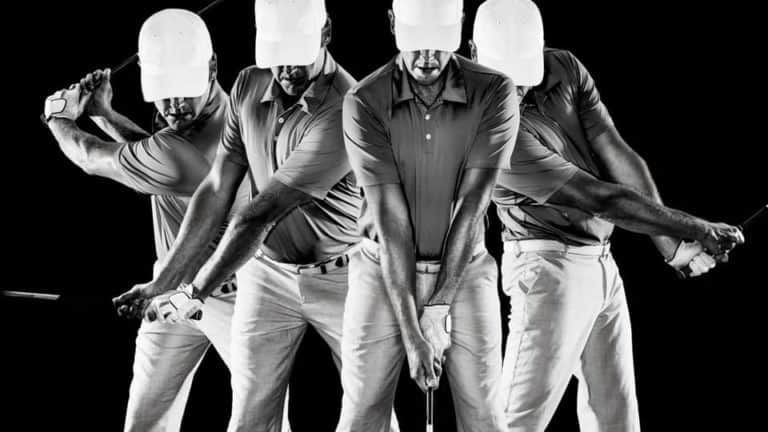What Is An Ace In Golf? – Complete Guide

Ace is a term used in golf to refer to a hole-in-one, or when a golfer sinks their ball into the hole on their first shot from the tee box. This article analyzes how to improve the chances of this rare and impressive feat.
The most basic goal of golf is to use the fewest number of strokes to get your ball in the target area called the “green.”
Once you are on the green, trying and getting the ball into the cup is an additional challenge.
Each golf hole has a par score associated with it. Par indicates how many strokes you should use to complete that particular hole.
An individual stroke less than par is referred to as a “hole-in-one” or “ace” in golf.
Note: A ball hit from a tee following a lost ball, out-of-bounds, or water hazard is not a hole-in-one due to the application of a stroke penalty.
Other names for the ace: golf scoring terms
Ace on a par 3: Aces typically happen on par 3, generally around holes that are 200 yards or less.
If that’s the case, an ace is also considered an “eagle,” meaning two strokes below par for the hole. While eagles are commendable accomplishments, they can’t compare to achieving an ace is a feat of pure greatness!
Ace on a par 4: Achieving an ace on a par 4 is extraordinary, and if you do, it’s known as an “albatross” or “double eagle,” both equally rare feats. In other words, with one shot, you’re three under par for the hole if you ace a par 4.
Ace on a par 5: A condor (double albatross), the rarest and most mythical of all golf shots, is when a golfer gets an ace on a par 5. To pull off such a shot often requires special circumstances like playing downwind or striking from the tee despite hazards in play.
How rare are aces in golf?
Pros have a much greater chance of making an ace than the average golfer due to their remarkable skill and increased exposure. Not only do they hit it closer than us mere mortals, but since professionals play more frequently, that means more chances for them to land a hole-in-one!
At the end of the day, no matter what level a player may be, getting an ace certainly makes for a memorable round that not everyone gets to experience.
Power in numbers: The impressive stats of an ace
As per the National Hole-in-One Registry, achieving a hole-in-one is not very likely, with the odds for recreational golfers estimated to be 12,500 to 1.
Although more skilled players have better chances of making an ace (5,000:1 for amateurs and 3,000:1 for professional golfers), evidence suggests it’s no easy task.
In the 2021-2022 PGA Tour season alone, there were only 28 recorded golf holes in one!
Every year, an estimated 450 million rounds of golf are played in the US alone; that’s between 25,000 to 30,000 per golf course!
Even though the average course reportedly has 10-15 aces each year or one every 3,500 rounds played on average, amazingly, only 1-2% of golfers make an ace annually. Undoubtedly quite intimidating odds!
If you’re lucky enough to card an ace, you might feel like it’s your day and that the odds are in your favor. However, the chances of making two aces in one round count up to 67 million to 1!
Unlike scoring an unforgettable hole-in-one on a par 3, achieving one on a par 4 is exponentially more difficult, with odds of 6 million to 1.
In 2022, Hugh Barrett from England experienced a dream golf season with an astonishing four holes-in-one!
His most recent achievement was in October, and the odds of any average golfer making this feat is 10 billion to 1. Amazingly, he has accomplished something many have only dreamed about achieving!
Factors that Affect a Golfer’s Ability to Ace a Hole
As we discussed before, skill and luck are essential to scoring a hole-in-one. However, there are many additional aspects you must take into account:
- Control the distance: The more precisely you hit the ball, the greater your chance of sinking a successful shot.
- Shot Direction: Although the flight of a golf ball rarely takes an uninterrupted path, having direction and focus on where you want to send it can significantly improve your chances of success. After all, the quickest route from one point to another is always a straight line.
- Choose the right golf club: When you hit a golf ball with the right club, it will travel in an ideal arc toward the hole – rather than bouncing towards it. This makes the probability of sinking your shot significantly higher!
Drivers, woods, and lower-numbered irons (2-5) are specifically designed to fly further with a flatter trajectory that encourages more rolling once the ball lands.
Conversely, higher lofted clubs like mid to high number irons (6-9) and wedges such as pitching, gap, sand, and lob provide greater elevation, which results in softer landings with a limited post-landing roll.
- Environmental Influences – When playing golf, the wind can drastically alter how a ball travels through the air and onto its intended target. Winds blowing towards you result in longer flights with more roll, while those against you make shots land softer without as much distance or rolling momentum.
- Elevation Above Sea Level – If you aim to hit your golf ball as far as possible, consider elevating your tee-off spot to gain extraordinary distance. Studies have shown that every 5,000 feet above sea level can increase the golf ball flight at altitude by 6% more than if situated at sea level.
- Shot Elevation Change – A golf player’s experience on a course is rarely one-dimensional. Playing uphill shots adds distance to the hole. It usually lands hard and rolls further. The downhill ones diminish the hole length but typically result in a softer landing and less rolling afterward.
- Position of the Hole on the Green – If you’re aiming for an ace, the placement of the hole on the green plays a major role in your success. Middle-ground holes are simpler to hit than those situated at corners or surrounded by difficulties like bunkers, trees, and thick grass.
How to improve your chances of scoring an ace in golf?
Hit the range and practice your tee shot to up your odds of getting an ace in a golf round, particularly on doglegs or horseshoe-shaped holes. On straight ones, you can employ a strong drive to make it travel all the way.
For instance, in par 3s with hazards you must be very exact when maneuvering from tee to cup. Don’t forget to do some honing of that skill too!
Why are aces more likely to occur on Par 3s?
Par 3 golf holes generally measure between 80 and 220 yards from the teeing ground to the green.
To accommodate players of varying abilities, each hole has a few different tee boxes from which somebody can start their round.
Given that a Par 3 only requires one shot onto the green and two putts to finish, it’s no surprise that most golfing aces occur on these short holes.
Is ace possible on par 4 hole?
With the right strategy, it is entirely feasible to sink a hole-in-one on a par 4. In fact, only one documented case of an ace scoring on such a tricky course in PGA Tour history: Andress Magee’s legendary 332-yard shot at TPC Scottsdale during the 2001 Phoenix Open. His brilliant stroke was witnessed by many and remained forever etched into golfing folklore!
Has Anyone Ever Aced a Par 5?
Absolutely! The shape of the hole is key to determining how close the cup appears from the tee. Doglegs and horseshoes usually create a shorter disposition, while straight holes can still lead to success.
Below are the notable professional golfers who made an ace on par 5:
- Mike Crean: 9th hole at Green Valley Ranch G.C. – 2002
- Dick Hogan: 8th hole at Piedmont Crescent Golf Course in Burlington, N.C. – 1973
- Larry Bruce: (dogleg) 5th hole at Hope C.C. in Arkansas – 1962
- Jack Bartlett: (dogleg) 17th hole at Royal Wentworth Falls C.C. in New South Wales – 2007
- Shaun Lynch: (horseshoe) 17th hole at Teign Valley G.C. in Christow, England – 2004
History of “Ace”
The word “ace” finds its root in the world of gaming. A single dot on a card, dice, or domino denotes an ace—the highest ranking number and symbol amongst any deck.
Subsequently, the word ‘ace’ began to be associated with those who excelled in their respective field (ex., ace fighter pilot, ace pitcher). It became a recognizable symbol of unparalleled excellence.
It is quite clear why “ace” became synonymous with a hole-in-one: not only does the word signify the numeral one, but it has also come to connote being at the top of your game.
When exactly the ace became a figure of speech for the spectacular golf shot called “hole-in-one” is ambiguous. However, it seems to have started being used as such around the early 1920s.
Famous Aces
According to the United States Golf Registry, Harold Stilson is officially the oldest person ever to hit a hole-in-one. In 2001 at age 101, he made an incredible 108-yard shot with a four iron on the 16th hole at Brockport’s Deerfield Country Club in New York!
The most impressive of all may be Norman Manley, who succeeded in hitting 59 holes-in-one during his lifetime; starting from 1964.
At 78 years old, Joel Ludvicek proved that age is nothing but a number when he hit an ace at the 178-yard 11th hole on Twin Pines Golf Course in Cedar Rapids, Iowa. This was his first ace since losing his vision, and it came as quite a surprise!
On the other side of the country, Michael Crean managed to sink an impressive 517-yard ace on Green Valley Ranch Golf Club’s par-five ninth hole located in Denver, Colorado. These two remarkable golfers prove that with some skill and determination, great things can be achieved!
Conclusion
In golf, an ace is a hole-in-one, which is when a player hits the ball into the hole with just one stroke. Aces are rare and considered a great accomplishment in the game of golf. They are often celebrated with a round of drinks or a small ceremony. While aces are not common, they can happen to players of all skill levels and are always thrilling moments on the course.








